I think this is a split-apply-combine problem, but with a time series twist. My data consists of irregular counts and I need to perform some summary statistics on each group of counts. Here's a snapshot of the data:

And here's it is for your console:
library(xts)
date <- as.Date(c("2010-11-18", "2010-11-19", "2010-11-26", "2010-12-03", "2010-12-10",
"2010-12-17", "2010-12-24", "2010-12-31", "2011-01-07", "2011-01-14",
"2011-01-21", "2011-01-28", "2011-02-04", "2011-02-11", "2011-02-18",
"2011-02-25", "2011-03-04", "2011-03-11", "2011-03-18", "2011-03-25",
"2011-03-26", "2011-03-27"))
returns <- c(0.002,0.000,-0.009,0.030, 0.013,0.003,0.010,0.001,0.011,0.017,
-0.008,-0.005,0.027,0.014,0.010,-0.017,0.001,-0.013,0.027,-0.019,
0.000,0.001)
count <- c(NA,NA,1,1,2,2,3,4,5,6,7,7,7,7,7,NA,NA,NA,1,2,NA,NA)
maxCount <- c(NA,NA,0.030,0.030,0.030,0.030,0.030,0.030,0.030,0.030,0.030,
0.030,0.030,0.030,0.030,NA,NA,NA,0.027,0.027,NA,NA)
sumCount <- c(NA,NA,0.000,0.030,0.042,0.045,0.056,0.056,0.067,0.084,0.077,
0.071,0.098,0.112,0.123,NA,NA,NA,0.000,-0.019,NA,NA)
xtsData <- xts(cbind(returns,count,maxCount,sumCount),date)
I have no idea how to construct the max and cumSum columns, especially since each count series is of an irregular length. Since I won't always know the start and end points of a count series, I'm lost at trying to figure out the index of these groups. Thanks for your help!
UPDATE: here is my for loop for attempting to calculating cumSum. it's not the cumulative sum, just the returns necessary, i'm still unsure how to apply functions to these ranges!
xtsData <- cbind(xtsData,mySumCount=NA)
# find groups of returns
for(i in 1:nrow(xtsData)){
if(is.na(xtsData[i,"count"]) == FALSE){
xtsData[i,"mySumCount"] <- xtsData[i,"returns"]
}
else{
xtsData[i,"mySumCount"] <- NA
}
}
UPDATE 2: thank you commenters!
# report returns when not NA count
x1 <- xtsData[!is.na(xtsData$count),"returns"]
# cum sum is close, but still need to exclude the first element
# -0.009 in the first series of counts and .027 in the second series of counts
x2 <- cumsum(xtsData[!is.na(xtsData$count),"returns"])
# this is output is not accurate because .03 is being displayed down the entire column, not just during periods when counts != NA. is this just a rounding error?
x3 <- max(xtsData[!is.na(xtsData$count),"returns"])


SOLUTION:
# function to pad a vector with a 0
lagpad <- function(x, k) {
c(rep(0, k), x)[1 : length(x)]
}
# group the counts
x1 <- na.omit(transform(xtsData, g = cumsum(c(0, diff(!is.na(count)) == 1))))
# cumulative sum of the count series
z1 <- transform(x1, cumsumRet = ave(returns, g, FUN =function(x) cumsum(replace(x, 1, 0))))
# max of the count series
z2 <- transform(x1, maxRet = ave(returns, g, FUN =function(x) max(lagpad(x,1))))
merge(xtsData,z1$cumsumRet,z2$maxRet)
